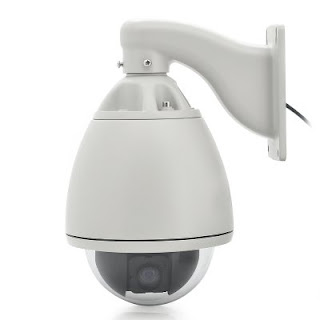Interpretation of Intrusion Alarm Power Supply
BS EN 50131-6: Alarm
systems – Intrusion and hold-up
systems: Part 6: Power supplies,
was revised
and re-issued as
EN50131-6:2008.
This document has been
prepared to give guidance on
the interpretation
of some
of the
clauses in the standard that are in need of
further clarification. It is intended
that this guideline can be
used by manufacturers to self-
certify their products to conform to
the standard.
This guidance document may be
further revised as required.
Only those items in
BS EN50131-6:
2008 that have been the
subject of formal comment by
BSIA members are listed below.
All other
clauses or parts of the
standard are believed to be
self-explanatory.
Advisory note:
This guide has been produced for use in PD6662:2010 – Scheme for the application of European standards for Intruder and Hold up alarm systems. BSIA has produced other guides specifically for the PD6662:2004 Scheme, which may not be appropriate for this scheme. Therefore you should seek the appropriate guidance.
This guide has been produced for use in PD6662:2010 – Scheme for the application of European standards for Intruder and Hold up alarm systems. BSIA has produced other guides specifically for the PD6662:2004 Scheme, which may not be appropriate for this scheme. Therefore you should seek the appropriate guidance.
Power Sources
There is inconsistent usage of PPS (Prime Power Source) and
EPS (External Power Source) in the EN50131 series of standards.
Figure 1 shows the relationship between each of these entities,
as used within the standard. Essentially the PPS is the national grid mains supply.
In those installations having a standby generator capability e.g. hospital, then
the standby generator is the SPPS. The (mains) power input to an I&HAS may come
from either source (PPS or SPPS) of which the I&HAS may have no knowledge and
this input is therefore generically known to the I&HAS as the EPS.
The APS is typically represented by any local standby power source (e.g. rechargeable battery) within the design and control of the I&HAS that can power the I&HAS (or part thereof) for a predetermined period of time in the event of loss of the EPS. Note that from EN50131-1 clause 9.2, if an SPPS is automatically switched into operation on loss of the PPS, the overall system standby period from the APS is reduced to 4 hours for I&HAS grades 2, 3 and 4.
EN50131-1 and TS50131-7 do not use the term “EPS” and refer
to the immediate power source of the PS consistently as the “PPS”.
Power Supply Rating
The rating of the power supply (PS) is the total continuous
output current capacity of the PS when operating under all conditions of EPS or
from a SD of capacity as defined by the PS manufacturer for a grade dependent time.
This is the output current that is available to power system components and does
NOT include the additional current that is used by the PS to recharge any attached
storage device. Note that where the PS is integral to another component e.g. a CIE,
then the rating of the PS should exclude the CIE and the manufacturer should declare
the CIE current consumption separately as a system component.
Note: the PS manufacturer must clearly state in the product documentation that
the total PS rating must not be exceeded where independent power outputs have continuous
rated outputs, the sum of which is greater than the total PS rating e.g. multiple
fused connections.
Interpretation (ব্যাখ্যা) of clauses
Clause 3.1.4 independent
power outputs
This clause refers to completely independent outputs from a power supply where a short circuit and/or overload on one output will have no affect on the others. Each output may have multiple connections. Simple fused outputs may not qualify as being independent if an overload or short circuit on one has an effect, even if only transitory (e.g. during finite time for fuseable link to fail), on another.
This clause refers to completely independent outputs from a power supply where a short circuit and/or overload on one output will have no affect on the others. Each output may have multiple connections. Simple fused outputs may not qualify as being independent if an overload or short circuit on one has an effect, even if only transitory (e.g. during finite time for fuseable link to fail), on another.
For the purposes of this interpretation the following diagram
gives a typical example.
 |
| Example general arrangement of PS and CIE with independent outputs |
In the example shown in Figure 1, O/P 1 and O/P 2 may only
be considered independent power outputs if applying a short circuit or overload
to one will have no effect on the other. Although the CIE module is connected to
the output of the regulating element, this connection is not considered an independent
output of the PS for the purposes of the tests of clause 8.2.
Clause 4.3 APS Capability
Note that there is no longer a table within EN50131-6 for standby capability.
This is replaced by the simple requirement that the PS must be capable of meeting the system requirement of EN50131-1, Table 23.
Note that there is no longer a table within EN50131-6 for standby capability.
This is replaced by the simple requirement that the PS must be capable of meeting the system requirement of EN50131-1, Table 23.
Clause 4.11 Tamper security
There is inconsistency between the requirements of EN50131-6:2008 and those for CIE in EN50131-3:2009. For consistency, the requirements of EN50131-3:2009, clause 8.7 should be applied.
There is inconsistency between the requirements of EN50131-6:2008 and those for CIE in EN50131-3:2009. For consistency, the requirements of EN50131-3:2009, clause 8.7 should be applied.
Clauses 7.19-7.22 Tests
(Tamper security)
These tests should be replaced by those from EN50131-3:2009 clause 11.9 (see clause 4.11, above).
These tests should be replaced by those from EN50131-3:2009 clause 11.9 (see clause 4.11, above).








































